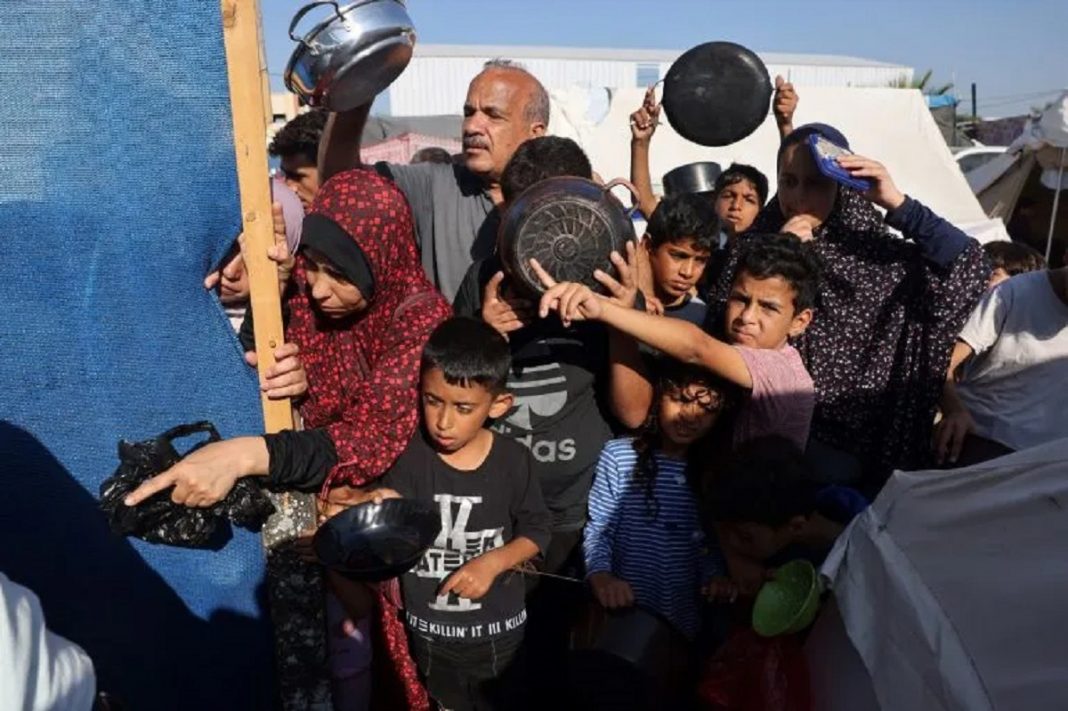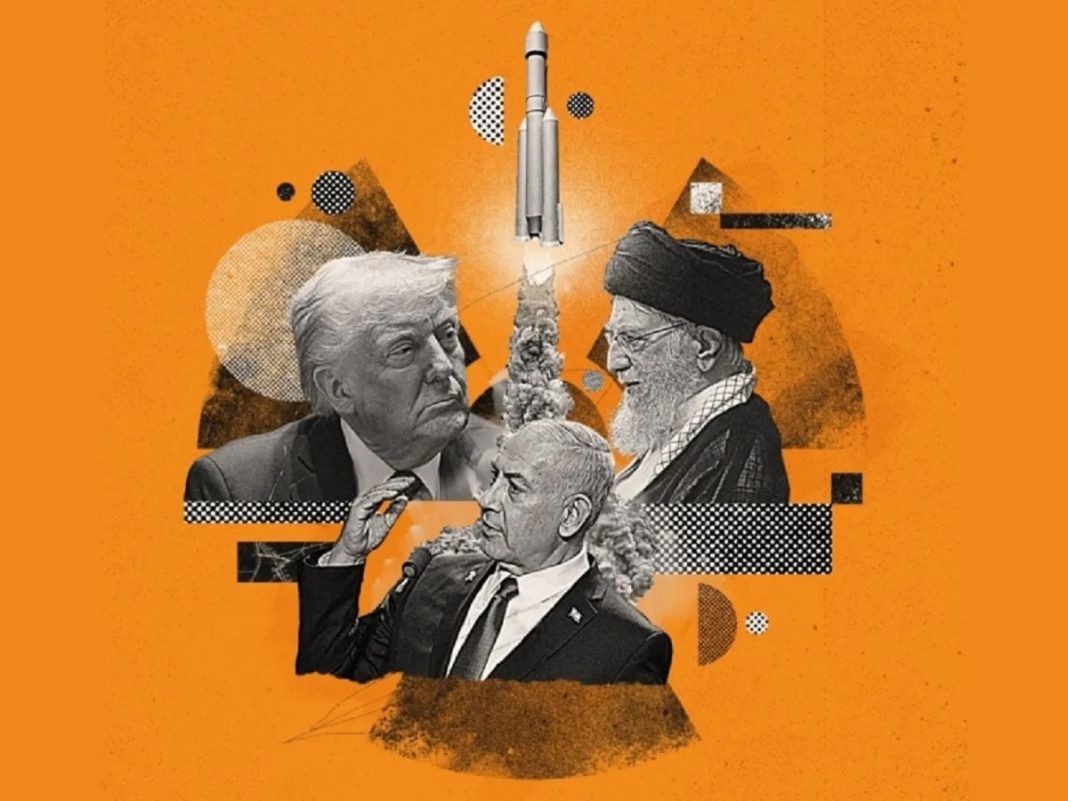Gabriel G. Tabarani
Gaza is not sliding toward a humanitarian catastrophe—it is already there. The images emerging now are unmistakable: children with the sunken eyes and distended bellies of acute malnutrition, families queuing for hours for scraps of bread, medical clinics turning away the sick because there is nothing left to give them. Starvation is no longer a warning; it is reality.
This is the direct consequence of shutting down the flow of humanitarian aid since the March 2025 collapse of the cease-fire between Israel and Hamas. Hundreds of trucks loaded with food, medicine, and shelter materials are stuck at crossings, blocked by political decisions and choked by security fears. When convoys do move, they face looting by desperate civilians, hijacking by Hamas, and attacks by criminal gangs. Aid groups say several hundred truckloads must enter Gaza every day to stave off famine. In recent months, the numbers have been a fraction of that.
It does not have to be this way. For the first year and a half of the war, even amid fierce fighting, humanitarian aid—imperfect, inadequate, but steady—kept Gaza from starvation. That didn’t happen by accident. It took relentless diplomacy, constant pressure on Israel to keep crossings open, and coordination with international aid providers to move food and medicine one convoy at a time. It was messy. It was frustrating. And it worked.
The current collapse is a case study in what happens when that sustained engagement disappears.
From the outset of this war, two things have been true at the same time: Israel has the right to defend itself against Hamas, and it has the moral and strategic obligation to protect civilians and allow humanitarian aid in. Without that balance, Israel’s military campaign loses legitimacy abroad, and civilians pay the price.
Convincing Israel to open aid routes was never easy, especially with far-right members of Prime Minister Benjamin Netanyahu’s coalition opposing it outright. But the pressure worked. Rafah opened. Kerem Shalom opened. Ashdod opened. By mid-2024, hundreds of trucks were getting in daily. That was the thin line between hunger and famine.
After the cease-fire in January 2025, the number surged to more than 600 trucks a day. But when that truce collapsed in March, Israel shut all humanitarian access, hoping to force Hamas into a hostage deal. For the first time since the early weeks of the war, no food at all went in. The consequences were immediate: dwindling stocks, desperation in the streets, and the first signs of widespread malnutrition.
When aid restarted, it was routed primarily through the Gaza Humanitarian Foundation (GHF), a new NGO backed by Israel, the United States, and the UAE. On paper, it could deliver food directly in secure areas. In practice, it reached only about 20 percent of the population. The United Nations and other established agencies were sidelined, hampered by looting, gang violence, and Israeli restrictions. The result was a lethal mix of scarcity, chaos, and deadly crushes at distribution sites.
If Gaza is to avoid mass death from starvation, four things must happen—immediately.
First, humanitarian aid cannot be used as a weapon. Denying food to civilians in an effort to pressure Hamas is both morally indefensible and strategically foolish. It risks tens of thousands of innocent lives and deepens Israel’s international isolation. Land crossings must stay open, and the rules of engagement must prioritize the safety of civilians and aid workers.
Second, every possible delivery channel must be used. The GHF alone cannot meet Gaza’s needs. Nor can the UN, working alone in the current security vacuum. Cooperation is essential—between the GHF, the UN, and other organizations—whether in parallel or in direct coordination. Aid must flood into Gaza through every available crossing and route. Turf battles, ideological red lines, and institutional rivalries cannot be allowed to choke off lifesaving supplies.
Third, the United States must lead. When Washington applies sustained, high-level pressure, aid moves. When it steps back, the trucks stop. Leadership means daily engagement from senior officials, tracking the number of trucks crossing each day, and refusing to let political distractions push this crisis off the agenda. Sporadic interventions will not save lives—only consistent attention will.
Finally, Hamas must release the hostages and step aside from governance. This war began with Hamas’s deliberate decision to put civilians at risk. It embeds its fighters among them, manipulates aid, and threatens those who deliver it. Countries with leverage over Hamas—Egypt, Qatar, and others—must make clear that its obstruction is helping starve the people it claims to defend.
The arguments dominating the political conversation—who’s to blame, which aid route is “legitimate,” whether chaos makes distribution impossible—are beside the point. Without immediate, large-scale relief, thousands more Gazans will die this year from hunger, disease, and exposure.
This crisis is not unsolvable. The food exists. The trucks exist. The crossings exist. What is missing is the political will to make the obvious choice: open the gates and let the aid through.
We know from experience what it takes to keep Gaza away from famine. It’s not magic, and it’s not idealism—it’s persistent, unglamorous work. It means calling allies in the middle of the night, creating political cover for them to make unpopular decisions, and measuring progress in the most basic of metrics: how many trucks got through today? Every gate opened matters. Every truck matters.
If the world chooses inaction, the result will be both morally indefensible and historically damning. Gaza will starve in full view of the international community, and the names of those who had the power to act—and chose not to—will be remembered for all the wrong reasons.
The time for debates is over. Open the crossings. Flood Gaza with food and medicine. Stop the starvation before it becomes the defining atrocity of this war.
This article was originally published in Arabic on the Asswak Al-Arab website


